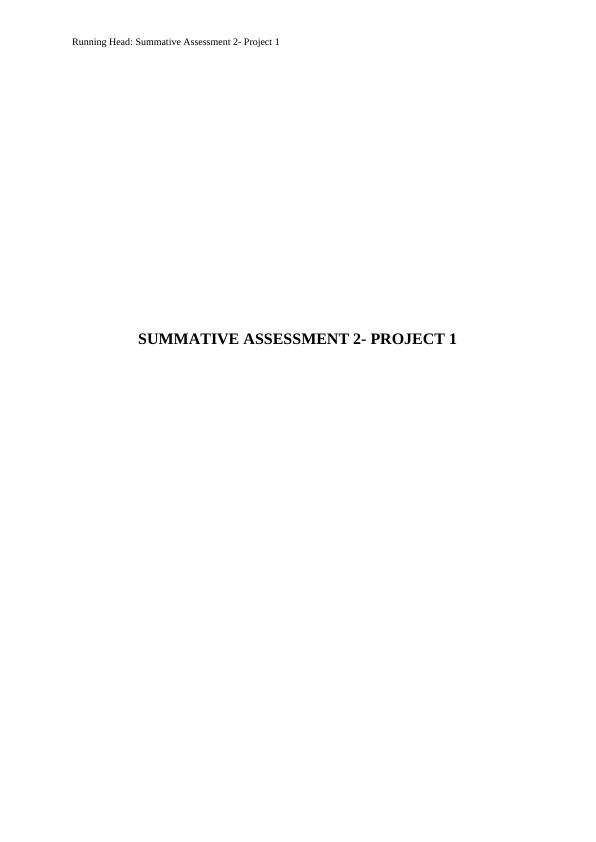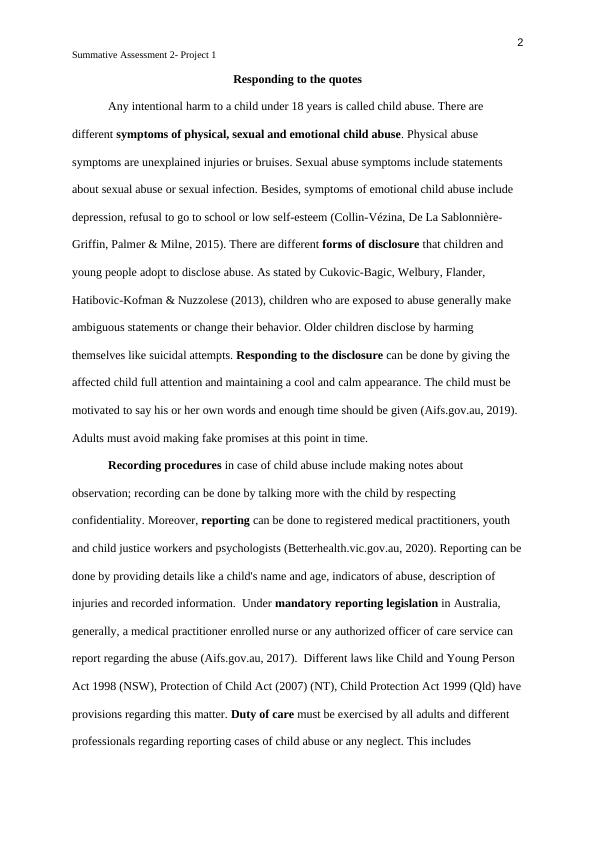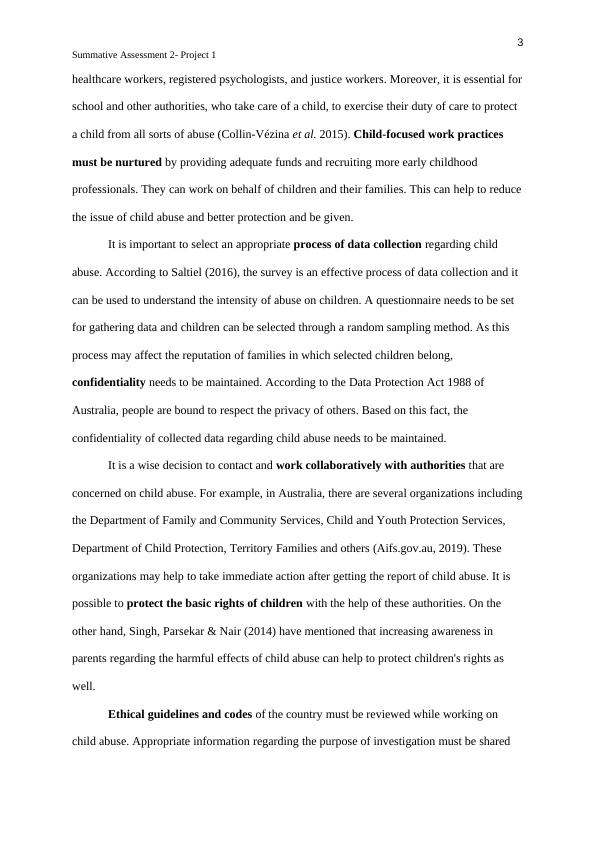Physical, Sexual and Emotional Child Abuse
Responding to quotes about child abuse and discussing identifying and responding to children and young people at risk.
7 Pages1263 Words17 Views
Added on 2022-08-20
Physical, Sexual and Emotional Child Abuse
Responding to quotes about child abuse and discussing identifying and responding to children and young people at risk.
Added on 2022-08-20
ShareRelated Documents
End of preview
Want to access all the pages? Upload your documents or become a member.
Ethics and the Identification and Response to Child Abuse and Neglect
|3
|660
|35
Social Work Law: A Case Study on Child Abuse and Neglect
|8
|2327
|151
Safeguarding: Roles, Responsibilities, and Procedures
|5
|966
|134
Importance of Adolescent Privacy in Health Care
|13
|702
|103
Impact of Child Abuse on Society
|2
|835
|91
Child Protection CHCPRT001: Case Study Analysis and Recommendations
|5
|900
|141



